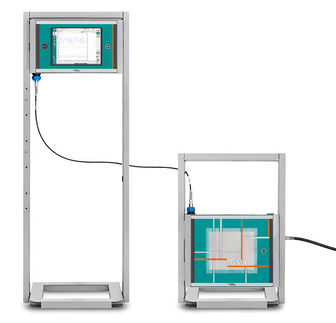A downloadable version [1] of the BBCH Scales, including illustrations, is available from the BBA [2] (Federal Biological Research Centre for Agriculture and Forestry)
Phenological growth stages and BBCH-identification keys of hop
|
| Code
| Description
|
| Principal growth stage 0: Sprouting
|
| 00 | Dormancy: rootstock without shoots (uncut)
|
| 01 | Dormancy: rootstock without shoots (cut)
|
| 07 | Rootstock with shoots (uncut)
|
| 08 | Beginning of shoot-growth (rootstock cut)
|
| 09 | Emergence: first shoots emerge at the soil surface
|
| Principal growth stage 1: Leaf development
|
| 11 | First pair of leaves unfolded
|
| 12 | 2nd pair of leaves unfolded (beginning of twining)
|
| 13 | 3rd pair of leaves unfolded
|
| 1 . | Stages continuous till . . .
|
| 19 | 9 and more pairs of leaves unfolded
|
| Principal growth stage 2: Formation of side shoots
|
| 21 | First pair of side shoots visible
|
| 22 | 2nd pair of side shoots visible
|
| 23 | 3rd pair of side shoots visible
|
| 2 . | Stages continuous till . . .
|
| 29 | Nine and more pairs of side shoots visible (secondary side shoots occur)
|
| Principal growth stage 3: Elongation of bines
|
| 31 | Bines have reached 10% of top wire height
|
| 32 | Bines have reached 20% of top wire height
|
| 33 | Bines have reached 30% of top wire height
|
| 3 . | Stages continuous till . . .
|
| 38 | Plants have reached the top wire
|
| 39 | End of bine growth
|
| Principal growth stage 5: Inflorescence emergence
|
| 51 | Inflorescence buds visible
|
| 55 | Inflorescence buds enlarged
|
| Principal growth stage 6: Flowering
|
| 61 | Beginning of flowering: about 10% of flowers open
|
| 62 | About 20% of flowers open
|
| 63 | About 30% of flowers open
|
| 64 | About 40% of flowers open
|
| 65 | Full flowering: about 50% of flowers open
|
| 66 | About 60% of flowers open
|
| 67 | About 70% of flowers open
|
| 68 | About 80% of flowers open
|
| 69 | End of flowering
|
| Principal growth stage 7: Development of cones
|
| 71 | Beginning of cone development: 10% of inflorescences are cones
|
| 75 | Cone development half way: all cones visible, cones soft, stigmas still present
|
| 79 | Cone development complete: nearly all cones have reached full size
|
| Principal growth stage 8: Maturity of cones
|
| 81 | Beginning of maturity: 10% of cones are compact
|
| 82 | 20% of cones are compact
|
| 83 | 30% of cones are compact
|
| 84 | 40% of cones are compact
|
| 85 | Advanced maturity: 50% of cones are compact
|
| 86 | 60% of cones are compact
|
| 87 | 70% of cones are compact
|
| 88 | 80% of cones are compact
|
| 89 | Cones ripe for picking: cones closed; lupulin golden; aroma potential fully developed
|
| Principal growth stage 9: Senescence, entry into dormancy
|
| 92 | Overripeness: cones yellow-brown discoloured, aroma deterioration
|
| 97 | Dormancy: leaves and stems dead
|







